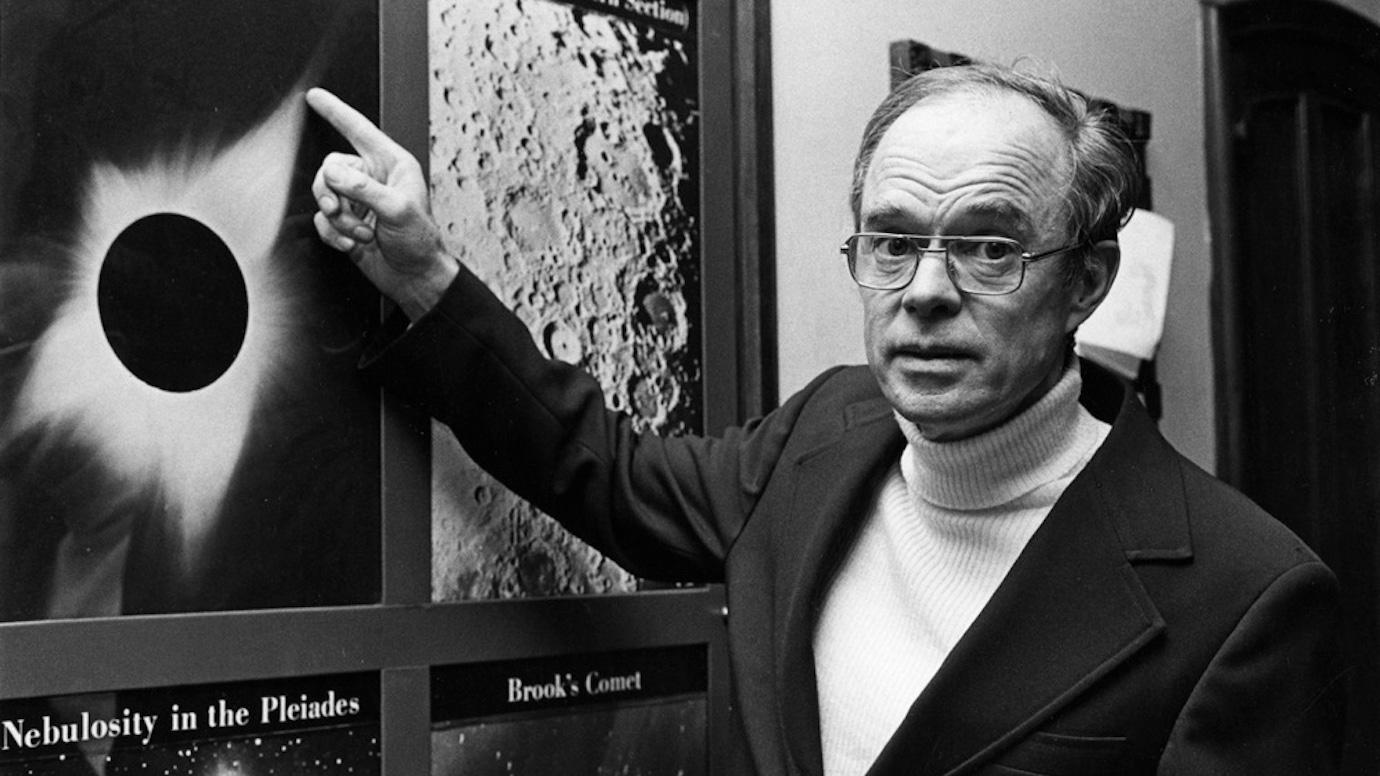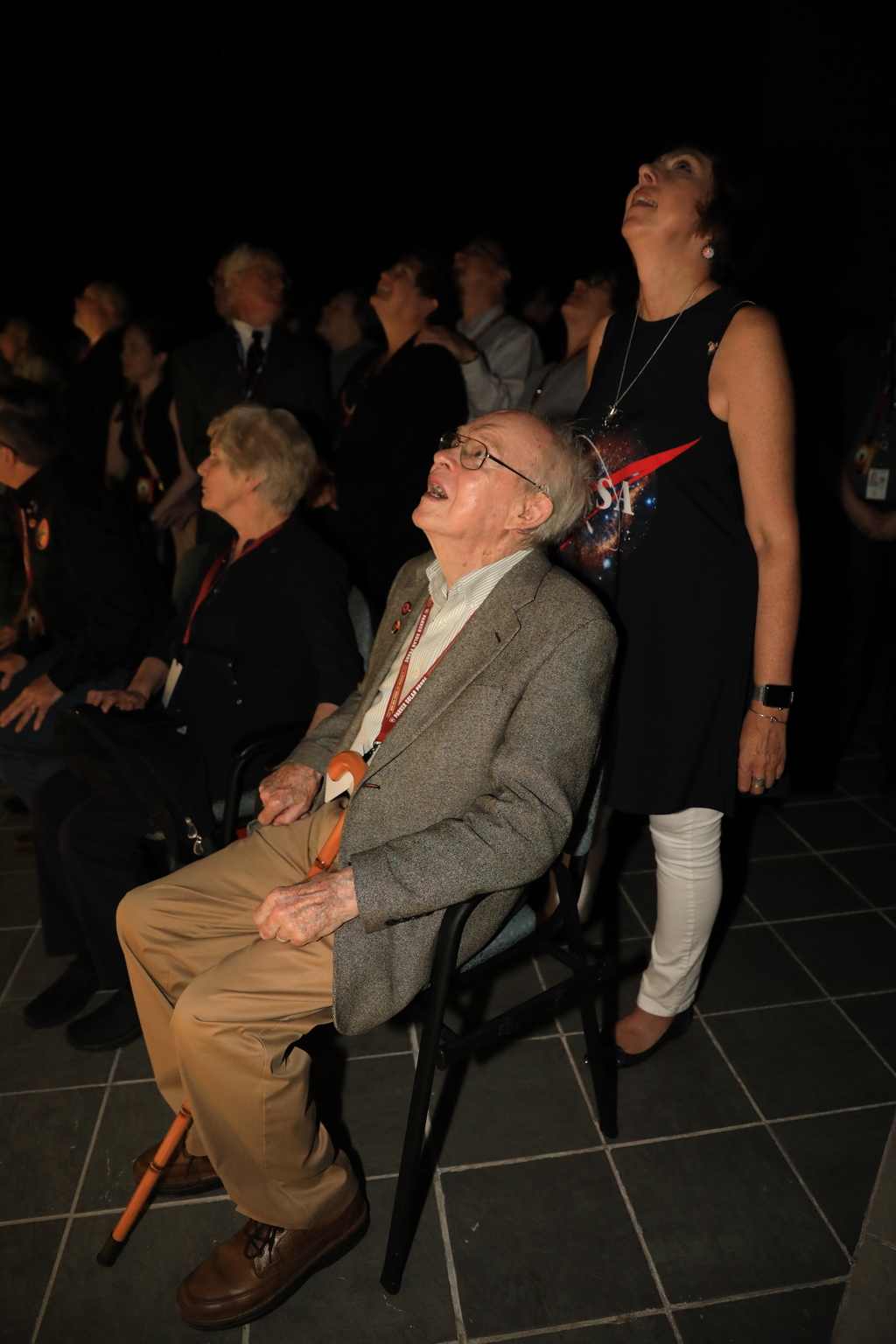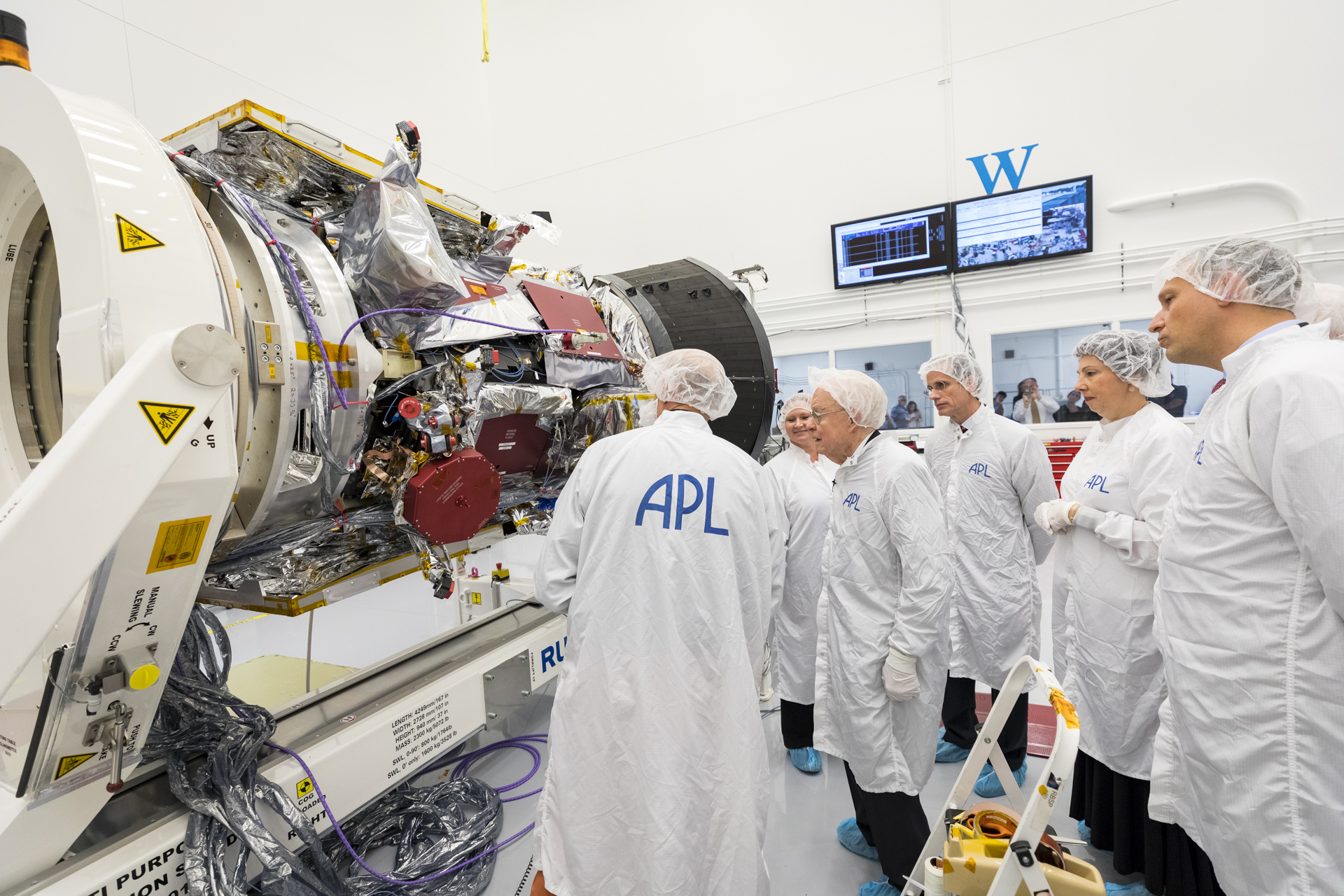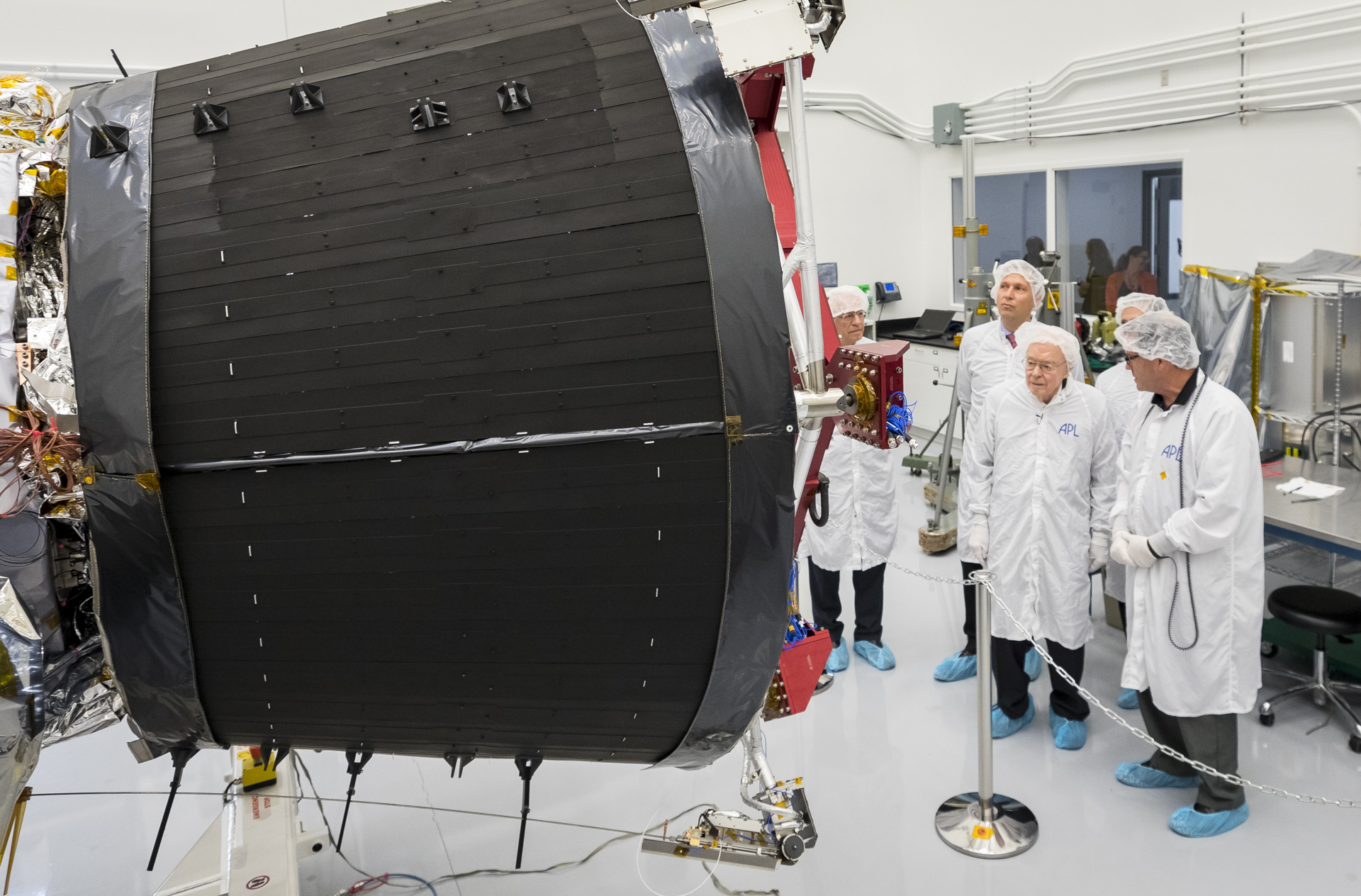Remembering Visionary Heliophysicist Eugene Parker
Posted on 2022-03-16 12:11:56Eugene N. Parker, visionary of heliophysics and namesake of NASA’s Parker Solar Probe mission, has passed away. He was 94.
As a young professor at the University of Chicago in the mid-1950s, Parker developed a mathematical theory that predicted the solar wind, the constant outflow of solar material from the Sun. Throughout his career, Parker revolutionized the field time and again, advancing ideas that addressed the fundamental questions about the workings of our Sun and stars throughout the universe.
“We were saddened to learn the news that one of the great scientific minds and leaders of our time has passed,” said NASA Administrator Bill Nelson. “Dr. Eugene Parker’s contributions to science and to understanding how our universe works touches so much of what we do here at NASA. Dr. Parker’s legacy will live on through the many active and future NASA missions that build upon his work.”
“The field of heliophysics exists in large part because of Dr. Eugene Parker,” said Thomas Zurbuchen, NASA’s associate administrator for science. “Honoring his work by giving Parker Solar Probe his name is one of the proudest accomplishments of my career. My work, my passion for science, and my drive to keep exploring is strongly influenced by this great man. Parker Solar Probe ‘touching the Sun,’ is a fitting accomplishment for his namesake mission.”
“Gene Parker is truly exceptional,” said Nour E. Raouafi, the Parker Solar Probe project scientist at the Johns Hopkins Applied Physics Laboratory (APL) in Laurel, Maryland. “I was recently working on a story about Gene’s career, and was amazed to see how, for decades, he would publish on three, four or five completely different topics in a single year. You don’t see that every day. Gene Parker will continue to live with us through the pioneering research throughout his career.”
In 2018, Parker became the first person to witness the launch of a spacecraft bearing his name. Built and operated at APL, Parker Solar Probe continues its mission today in pursuit of the pioneering questions Parker first envisaged more than a half century ago.
“Anyone who knew Dr. Parker, knew that he was a visionary,” said Nicola Fox, director of the Heliophysics Division at NASA Headquarters in Washington, and a former Parker Solar Probe project scientist. “I was honored to stand with him at the launch of Parker Solar Probe and have loved getting to share with him all the exciting science results, seeing his face light up with every new image and data plot I showed him. I will sincerely miss his excitement and love for Parker Solar Probe. Even though Dr. Parker is no longer with us, his discoveries and legacy will live forever.”
In fact, Raouafi adds, the decision to name NASA’s solar probe mission after Parker in 2017 was a fitting tribute to that remarkable scientific legacy. “His research covered a wide range of disciplines ranging from the solar interior, atmosphere and solar wind, to Earth and planetary magnetospheres, out to the edge of the solar system and even into stellar and galactic physics,” he said. “It is exceptionally difficult for any individual to have such a multidisciplinary and diverse trail of seminal works.”
Raouafi recalled the story behind the publishing of Parker’s solar wind theories. Subrahmanyan Chandrasekhar, editor of the Astrophysical Journal (who would go on to win the Nobel Prize in 1983), rebuffed the recommendations of several reviewers and opted to publish Parker’s 1958 paper predicting the existence of the supersonic solar wind.
“Chandrasekhar famously said to Parker, ‘Eugene, I think this is a ridiculous idea, but I do not want to see it killed. I will publish it,’” Raouafi said. “Well, as we know today, the idea was not ridiculous after all.”
Dr. Eugene N. Parker, visionary of heliophysics and namesake of NASA’s Parker Solar Probe, has passed away. He was 94.
As a young professor at the University of Chicago in the mid-1950s, Parker developed a mathematical theory that predicted the solar wind, the constant outflow of solar material from the Sun. Throughout his career, Parker revolutionized the field time and again, advancing ideas that addressed the fundamental questions about the workings of our Sun and stars throughout the universe.
Credit: NASA

Parker, pictured in 1977. The solar wind is visible in the halo around the sun during an eclipse.
Credit: Courtesy of the Hanna Holborn Special Collections Research Center
High-Res Image
Eugene Parker watches the launch of the spacecraft that bears his name – NASA’s Parker Solar Probe – early in the morning of Aug. 12, 2018. NASA Director of Heliophysics Nicky Fox, who at the time was the Parker Solar Probe project scientist, stands behind him. Parker Solar Probe is humanity’s first mission to the Sun and has traveled closer to our star than any spacecraft before.
Credit: NASA/Glenn Benson
High-Res Image
A plaque dedicating NASA’s Parker Solar Probe mission to its namesake, Eugene Parker, who first theorized the existence of the solar wind, was installed onto the spacecraft on May 18, 2018, at Astrotech Space Operations in Titusville, Florida. The memory card at bottom of the plaque contains 1,137,202 names submitted by the public to travel to the Sun aboard the spacecraft, along with photos of Parker and a copy of his groundbreaking 1958 scientific paper. Parker Solar Probe is the first NASA mission to be named for a living person.
Credit: NASA/Johns Hopkins APL/Ed Whitman
High-Res Image
On Oct. 3, 2017, Eugene Parker (center), professor emeritus at the University of Chicago, visits the spacecraft that bears his name: NASA’s Parker Solar Probe. Thomas Zurbuchen (bottom right), the associate administrator for NASA’s science mission directorate, and Ralph Semmel (behind Parker), the director of the Johns Hopkins Applied Physics Laboratory in Laurel, Maryland, where the probe was designed and built, joined the tour.
Credit: NASA/Johns Hopkins APL/Ed Whitman
High-Res Image
On Oct. 3, 2017, Eugene Parker, professor emeritus at the University of Chicago, visits the spacecraft that bears his name, NASA’s Parker Solar Probe, at the Johns Hopkins Applied Physics Laboratory in Laurel, Maryland, where the probe was designed and is being built. The large black structure is one of the spacecraft's massive cooling radiators. The spacecraft is humanity’s first mission to a star, traveling directly through the Sun’s atmosphere.
Credit: NASA/Johns Hopkins APL/Ed Whitman
High-Res Image
Eugene Parker, University of Chicago Prof. Emeritus of Astronomy and Astrophysics, is remembered for seminal contributions to the understanding of our sun and solar system.
Credit: Photo by John Zich/University of Chicago
High-Res Image